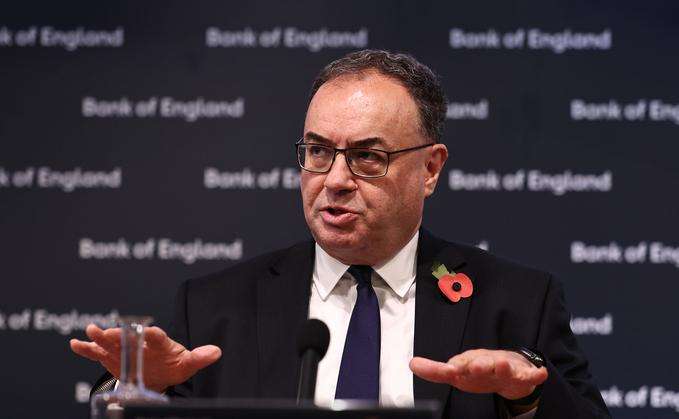Islamic architecture stands as a testament to centuries of rich cultural, spiritual, and artistic innovation. Across the globe, magnificent mosques rise as symbols of faith, community, and human ingenuity, accommodating millions of worshippers and showcasing breathtaking design. These grand structures are not merely places of prayer but vital centers of learning, charity, and social gathering. Here, we delve into some of the world's largest and most aesthetically stunning mosques, highlighting their unique features and enduring significance.
From the ancient foundations of Islam to modern-day marvels, mosques reflect diverse regional styles, historical periods, and the evolving needs of their congregations. Their sheer scale, intricate detailing, and serene atmospheres inspire awe and reverence in visitors from all walks of life.
Top 10 Largest Mosques in the World (Ranked by Capacity and Significance)
The Grand Mosque (Masjid al-Haram) – Mecca, Saudi Arabia Undisputedly the largest mosque in the world, Masjid al-Haram surrounds the Kaaba, the holiest site in Islam. Its staggering capacity can accommodate over 2 million worshippers (with some estimates reaching 4 million during peak Hajj periods, utilizing all available spaces). First mentioned in 638 CE, it has undergone continuous expansions, particularly the recent Saudi expansions, to accommodate the ever-increasing number of pilgrims performing Hajj and Umrah. Its vast area spans approximately 400,800 square meters.
The Prophet's Mosque (Masjid al-Nabawi) – Medina, Saudi Arabia As the second largest mosque globally, Masjid al-Nabawi is of immense religious importance, housing the tomb of Prophet Muhammad under its iconic Green Dome. Established in 622 CE, it has been expanded multiple times to reach a capacity of up to 1.5 million worshippers during pilgrimage seasons. Its tranquil courtyards, retractable umbrellas, and beautiful architecture make it a spiritual beacon for Muslims worldwide. The total area covered is approximately 384,000 square meters.
Imam Reza Shrine – Mashhad, Iran This sprawling complex is not just a mosque but a vast religious city, encompassing the mausoleum of Imam Reza, a museum, libraries, seminaries, and various prayer halls. With a capacity that can reach 1.2 million worshippers, it is one of the largest and most visited pilgrimage sites in Iran. Dating back to the 8th century, the complex spans an immense area, estimated at over 267,069 square meters.
Faisal Mosque – Islamabad, PakistanThe Faisal Mosque, gifted by Saudi Arabia, is notable for its unconventional and striking design, resembling a Bedouin nomad's tent rather than traditional Islamic architecture. While it can accommodate 300,000 people, the main prayer hall holds around 10,000, with the vast courtyard and surrounding areas making up the larger capacity. Completed in 1986, it was once the largest mosque in the world before subsequent expansions of the Saudi holy mosques. It covers an area of 130,000 square meters.
Istiqlal Mosque – Jakarta, Indonesia As the national mosque of Indonesia and the largest in Southeast Asia, Istiqlal Mosque stands as a monument to the country's independence in 1949. Designed by a Christian architect, it symbolizes Indonesia's commitment to religious tolerance. Completed in 1978, it can host up to 200,000 worshippers across its multiple floors and vast courtyard, spanning approximately 9.5 hectares (93,200 square meters).
Hassan II Mosque – Casablanca, Morocco Perched dramatically overlooking the Atlantic Ocean, the Hassan II Mosque is renowned for its breathtaking beauty, intricate details, and the world's tallest minaret at 210 meters. Commissioned by King Hassan II, it was largely funded by public donations. Completed in 1993, its main prayer hall holds 25,000, with an additional 80,000 worshippers able to gather in the vast outdoor plaza, bringing its total capacity to 105,000.
Badshahi Mosque – Lahore, Pakistan A magnificent example of Mughal architecture, the Badshahi Mosque was constructed in the mid-17th century. Its majestic red sandstone and marble facade are iconic. While its central prayer hall is significant, its enormous courtyard contributes to its impressive capacity, which can accommodate up to 100,000 worshippers. It remains a crucial religious and historical landmark in Pakistan.
Al-Saleh Mosque – Sana'a, Yemen Inaugurated in 2008, the Al-Saleh Mosque is one of Yemen's most prominent modern landmarks, accommodating up to 45,000 people. Beyond its primary function as a place of worship, the complex includes educational facilities like classrooms and libraries, reflecting a blend of faith and learning. Its modern design and scale make it a significant architectural achievement.
Sheikh Zayed Grand Mosque – Abu Dhabi, United Arab Emirates Opened in 2007, the Sheikh Zayed Grand Mosque is a contemporary masterpiece celebrated for its stunning aesthetics, featuring vast quantities of colored marble, semi-precious stones, and intricate floral designs. It houses the world's largest hand-knotted carpet and several enormous chandeliers. With a capacity for 41,000 worshippers, it is a major tourist attraction and a symbol of Islamic artistry and grandeur in the UAE.
Jama Masjid – Delhi, India Completed in 1656 during the reign of Mughal emperor Shah Jahan, the Jama Masjid remains one of India's largest and most iconic mosques. Its grand courtyard can accommodate 25,000 people, making it a central gathering place for worship in Old Delhi. Its towering minarets and red sandstone and white marble construction exemplify the opulence of Mughal-era design.
Oldest Mosques in the World: Foundations of Faith
Beyond their size and beauty, some mosques hold profound historical significance as the earliest places of worship in Islam. These ancient structures offer a glimpse into the nascent stages of Islamic civilization:
Masjid al-Haram (The Grand Mosque), Mecca, Saudi Arabia: While continually expanded, its origins trace back to before the advent of Islam, with the Kaaba believed to be first built by angels and then by Abraham and Ishmael. It predates 622 CE.
Quba Mosque, Medina, Saudi Arabia: Built by Prophet Muhammad himself in 622 CE after his migration to Medina, it is considered the first mosque built in Islam.
Masjid al-Nabawi (The Prophet's Mosque), Medina, Saudi Arabia: Also built by Prophet Muhammad in 622 CE, it stands as the second mosque in Islamic history and is where he is buried.
Masjid al-Qiblatain (Mosque of the Two Qiblas), Medina, Saudi Arabia: Built in 623 CE, it is significant as the site where Prophet Muhammad received the revelation to change the direction of prayer (Qibla) from Jerusalem to the Kaaba in Mecca.
The Mosque of the Companions (Masjid as-Sahabah), Massawa, Eritrea: Believed to have been built around 613 CE by early Muslim emigrants seeking refuge from persecution, making it possibly the oldest mosque in Africa.
Great Mosque of Sana'a, Yemen: One of the oldest mosques, believed to have been constructed during the Prophet Muhammad's lifetime (early 7th century CE).
Al-Aqsa Mosque, Jerusalem, Palestine: While its current structure dates to 705 CE, the site itself is immensely significant in Islamic tradition and is mentioned in early Islamic texts, believed to be the second house of worship built on Earth after the Kaaba.
These mosques, both ancient and modern, continue to inspire with their architectural brilliance and serve as powerful symbols of Islamic heritage and the enduring devotion of millions worldwide.








.svg)


.jpg)
_6.jpg)